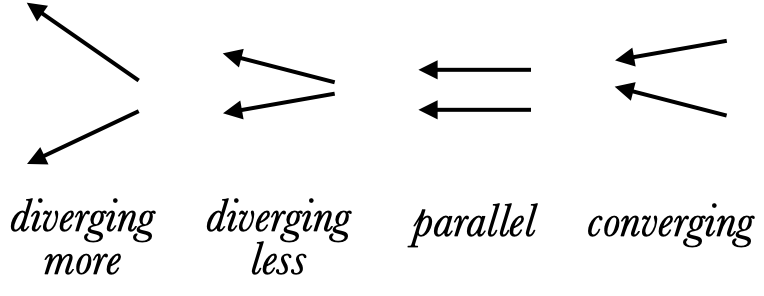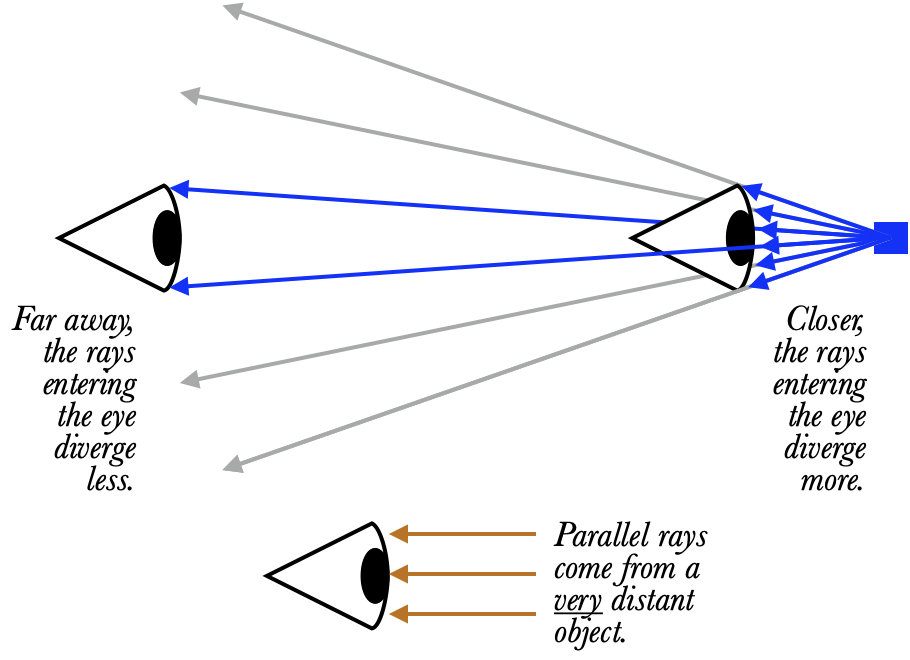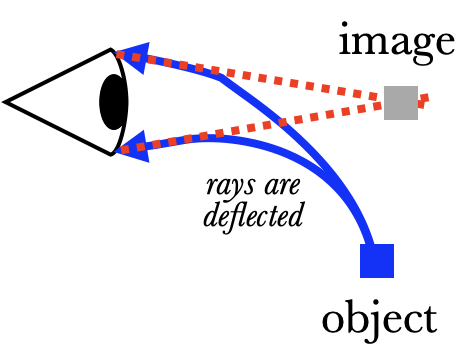1.
Images
When rays of light are emitted by a small object, whether created by the object itself or diffusely reflected from some other light source, the rays spread out in all unobstructed directions. As the rays move away from their source, they get farther and farther apart from each other: we say that these rays diverge.
When multiple diverging rays from a source enter our eye (or a camera lens, or whatever), our eye expects those rays to be coming from a single location. It traces those rays backward until it finds a point where they seem to be coming from, and decides that that must be the location of the object. Rays which are diverging more are seen to come from a closer source, which rays which are diverging less (and are closer to parallel) are seen to come from a more distant source.


If something redirects the rays of light from a source before they reach our eye, however, then our eyes can be fooled into thinking that the object is somewhere other than it really is. We say that our eye sees an image of that object at the new location.